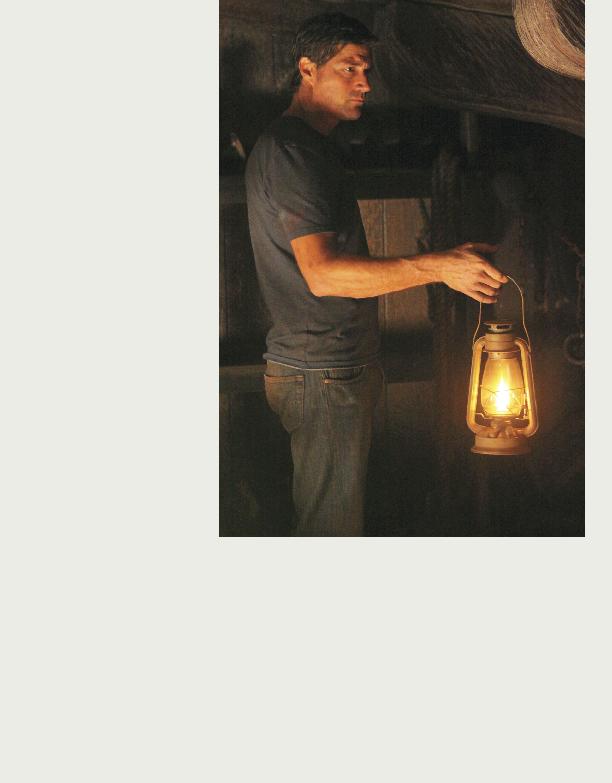
writers' room. In the days that follow, the
episode is constructed as a series of one-line
beat descriptions, all structured around the
show's six-act structure (the teaser and five
acts) and the need for a dramatic end for
each act. It's common for the writing staff to
spend at least five hours a day in the writers'
room to ensure everyone is aware of every-
one else's work and where the story is
headed. When they leave the room, it's to
turn the huge, whiteboarded outlines into a
57-page shooting script.
the staff can no longer push ideas or revela-
tions to the next one. "We only had 18 hours
this year," he chuckles. "We got to look at
the waffle cone for a minute and take a pic-
ture and then get back in the car." At the end
of the day, he feels it's always about telling a
great story. "It changes conversations in the
[staff] kitchen, maybe, but once we get into
the room, we just fall back into the way we
always play. At a certain point you stop
thinking about pressure and all that. Once
you get into that room, it somehow has a
calming effect, and it becomes more of, `How
do we make the coolest story?' It's not until
the hour before it airs that you're like, `Oh,
God, what if they hate it?'"
ers. "When Eddy and I are writing a scene for
anything, we will enter the scene and say,
`It's going to be about this, accomplish that
and take us there,'" he explains. "But there
are infinite possibilities for how you can ex-
ecute and how you can take it somewhere.
So you can work in your waffle cone if you
must." Horowitz also notes that, this late in
the series, it's no longer possible to shift gears
and spin the story around 180 degrees, but
points out that the staff wouldn't want to do
something that drastic anyway.
from the third season's "Expose," which was
an ambitious episode that hoped to tie up
several dangling threads, but the first cut of
the story ran almost 10 minutes over. One
scene that fell to the cutting-room floor in-
volved the characters Nikki and Paulo (Kiele
Sanchez and Rodrigo Santoro, respectively),
who found an asthma inhaler in the jungle
-- Shannon's missing inhaler that caused so
much trouble in the first season. "Some ideas
do come back," Horowitz says, referring to
Hurley (Jorge Garcia) finding the device in
was something we always wanted to do and
we found a place to do it."
detail in this final season. "Sometimes we're
presenting things that are not really ques-
tions to us, but they inevitably become
questions for the audience," Lindelof says.
"If they're not questions for us we don't re-
ally feel beholden to answer them. From the
moment that you heard the roar in the jun-
gle, we had every intention of explaining
what the origins of the [smoke] monster are
and what its function is. You'll know a
thousand times more about it by the end of
won't be other questions for some people
left in that wake, that all depends on the in-
dividual." He uses the example of Harry Pot-
ter and points out that while author J.K.
Rowling never addresses the question of
why some people in her world are magical
and others aren't, it hasn't stopped people
from asking the question.
pointed out that the questions the writers were
concerned with answering were the ones the
characters were concerned with. Yet, it's im-
possible to explain everything, as the
showrunner pointed out when he quipped